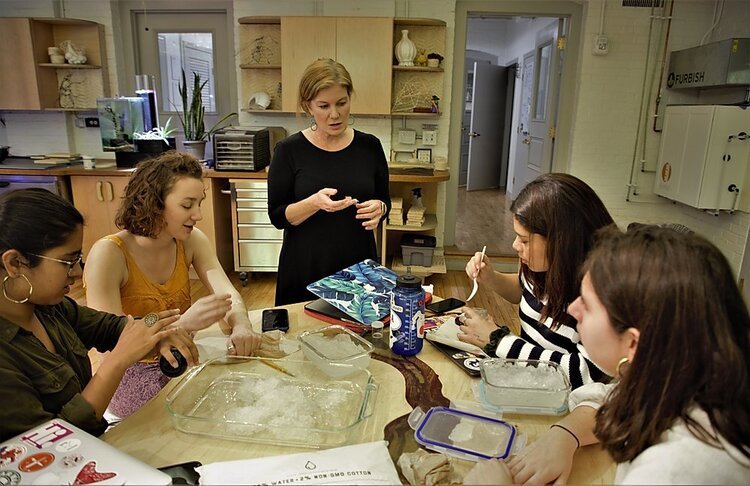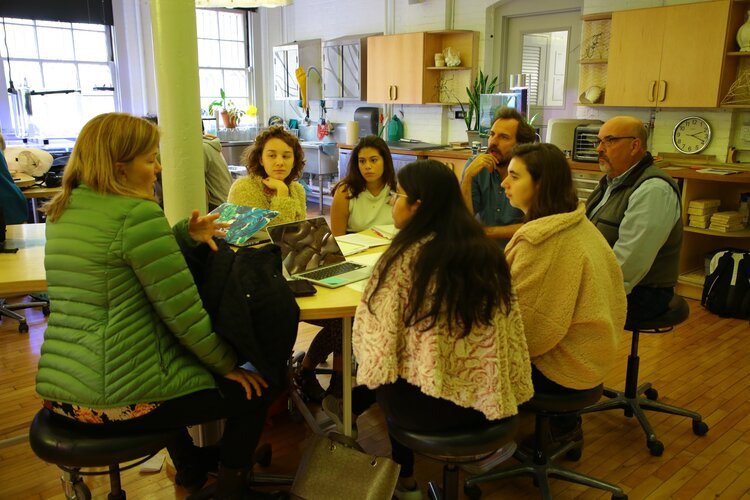Burn Barriers
MoMA BioDesign Challenge 2020
WHAT ARE ACID ATTACKS?
An acid attack is the act of throwing acid onto the body of another "with the intention to disfigure, torture, or kill.” Perpetrators of these attacks throw corrosive liquids (e.g., Nitric or Sulfuric acid) at their victims, usually at their faces, burning them, and damaging skin tissue.
It’s assumed that almost 1000 women are victims of acid assaults in India, and we are specifically looking at Uttar Pradesh in Northern India where the attacks are the highest in number, and many of them often go unreported. In 2015, over 200 cases were reported from all over India, out of which 61 cases were from Uttar Pradesh.
There’s a lot of stigma around acid attacks. In southeast Asia especially, these attacks are a gendered attack towards women. In our research, we discovered that in some areas, there’s a lack of awareness on how to properly treat acid attacks, for example applying ghee, haldi or turmeric, oil, cotton and even milk to burned areas doesn’t provide any help and worsens the situation of the burns.
OUR PROCESS
Burn Barriers was designed by Kaanchi Chopra, Kate Reed, Sara Tulloh & Teréz Villeda-Medina. This product uses biomaterials to create a bandage for acid attack victims. The goal of Burn Barriers is to give women an appropriate medical grade response to alleviate and care for acid burns. Burn Barriers’ mission is to empower women. We do this through a do-it-yourself application, which allows women to help women, and be their own heroes. Our solution empowers women giving them agency, decency, and collective action. We created this project to find a biomaterial solution to traditional bandages. This project is still in process in terms of material exploration.
ITERATION 1:
Our first iteration of the project was based on the fact that many women in India carry pepper spray. So, we created a dual hydrogel pepper spray system that women carry everywhere.
Immediately we noticed some defaults with this first iteration. The biggest issue was the combination of pepper spray and hydrogel. Also, we figured out that this is not sterile method of carrying hydrogel and that hydrogel was incapable of coming out of a spray nozzle. Therefore, we had to redesign how our product would be applied.
ITERATION 2:
From iteration 1, we continued with the investigation of a bio-based hydrogel*. Hydrogels could be very beneficial for burn victims because hydrogel wound dressings are designed to hold moisture in the surface of the wound, which keeps the wound moist.
Keeping the wound moist would then promote healing.
During iteration two, we began to focus on the science, and referencing case studies on hydrogels chemistry and molecular formulation. These case studies would allow us to determine which consistency would promote the most hydration to the affected areas.
*Hydrogel: A hydrogel is a three-dimensional (3D) network of hydrophilic polymers that can swell in water and hold a large amount of water while maintaining the structure due to chemical or physical cross-linking of individual polymer chains.
WHAT IS HYDROGEL?
Hydrogel: is a three-dimensional (3D) network of hydrophilic polymers that can swell in water and hold a large amount of water while maintaining the structure due to chemical or physical cross-linking of individual polymer chains. Hydrogels were first reported by Wichterle and Lím (1960)
ITERATION 3:
We learned about mycelium and natural chitosan in mushrooms. This is a simpler solution to make. We learned about pure mycelium without a substrate, and this inspired us to create a chitosan bio-based hydrogel bandage.
Our experiment deacetylated (to remove acetyl from (a compound) usually by hydrolysis) the chitin in the mycelium* producing chitosan which would make the hydrogel biocompatible. To deacetylate the chitin*, which means removing the acetyl group from a molecule, we used sodium hydroxide and lactic acid to activate the hydrogel. The deacetylation converts the hydrophilic chitin into hydrophobic chitosan. Chitosan is the polysaccharides which is found in chitin which can be made by treating chitin with sodium hydroxide.
During our experimentation, we tested strips of mycelium that contained 70% chitin. The strip was treated with a 2% solution of lactic acid and a 1 molar solution of sodium hydroxide. Due to the use of lactic acid and sodium hydroxide, we also had to thoroughly rinse the bandages to achieve a neutral pH that would then be safe for the skin.
Mycelium is the root structure of mushrooms which has a wide variety of uses from plastic to medical applications.
Chitin is a fibrous substance consisting of polysaccharides which is found in exoskeleton of arthropods and the cell walls of fungi.
Hydrogel is a three-dimensional network of hydrophilic polymers that can swell in water and hold a large amount of water while maintaining the structure due to chemical or physical cross-linking of individual polymer chains.
The experimentation for iteration 2 and 3 are still in progress.
WHY WILL IT WORK?
Our hydrogel dressings will work on burns because of its ability to maintain an optimum wound healing environment which is warm and moist. More specifically, what makes the bandages work is Chitosan.
Due to its antimicrobial properties, Chitosan allows to keep the wound clean after the removal of infected skin. Hydrogel also helps wound healing due to its hydrophilic properties and three-dimensional networks. These qualities allow for large quantities of water to be absorbed and locks in moisture.
Product System
+
Product System +
PACKAGING
This packaging render is designed based off sterile medical device packaging. In the event of an acid attack, emergency victims should first rinse themselves with clean water. At this stage, if the victim can receive medical treatment, they should seek medical attention. If they cannot receive medical treatment within 3 days, then Burn Barrier should be applied to the wound.
APPLICATION
Application instructions are illustrated and in both English and Hindi.
Identify infected area
Rinse thoroughly with cold water
Open Burn Barrier packaging
Remove Burn Barrier bandage from package
Place Burn Barrier bandage on to the wound
Make sure to cover the entire wound with one or more Burn Barrier bandage
Cover the Burn Barrier bandage with dressing to keep wound clean
Change dressing twice daily while leaving Burn Barrier Bandage on the wound
EMPOWERING WOMEN
The main goal of Burn Barriers is to create an emergency solution to the tragic problem of gendered acid attacks in India. Another key aspect to Burn Barriers is female empowerment. We wanted the project to be a do-it-yourself application so that these women are not dependent on men to help them. This product allows them to be their own heroes and highlights women helping women.
Along with our mission we are creating larger conversations about acid attacks in India, creating a teachable moment for educational awareness. We envision an ad campaign to go along with Burn Barriers to empower a larger global conversation.














